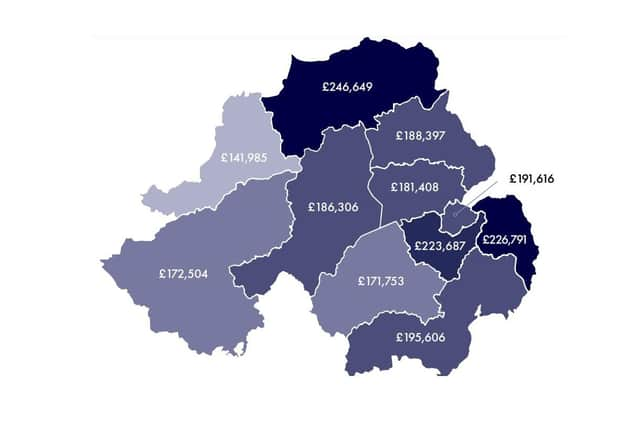Derry house prices slump by 3.6% to £141,985 and are on average £104,664 cheaper than in Causeway Coast
and live on Freeview channel 276
The average cost of buying of a home in Derry remained significantly lower than in all other areas.
For example, the average price of a home in Derry/Strabane in Quarter 3 2022 (£141,985) was £29,768 lower than the average price of a home in Armagh City, Banbridge & Craigavon (£171,753), which posted the second lowest average in the north over the quarter.
Advertisement
Hide AdAdvertisement
Hide AdAnd an average home in Derry/Strabane cost a remarkable £104,664 less than its equivalent in the Causeway Coast & Glens, which posted the highest average in the six counties at £246,649.


The report, produced by UU in partnership with the Housing Executive and Progressive Building Society, advised that the ‘Causeway Coast and Glens Local Government District (LGD) witnessed the largest overall price increase (14.9%), with the Ards and Down (2.9%), Lisburn and Castlereagh (2.0%), Mid and East Antrim (3.5%) and Belfast (0.3%) all showing more modest or nominal increases’.
It was different picture in Derry/Strabane.
The reports authors state: “In contrast, LGDs such as Antrim and Newtownabbey (5.0%), Armagh City, Banbridge & Craigavon (7.6%), Derry City & Strabane (3.6%), Mid Ulster (3.6%) and, to a much larger degree, Fermanagh and Omagh (15.3%) and Newry Mourne and Down (13.3%) showed price declines.”
Ursula McAnulty, Head of Research at the Housing Executive, introducing the report, stated: “While beleaguered households and businesses craved a period of respite from financial challenges, the third quarter of 2022 and subsequent weeks only seem to have strengthened the headwinds facing the economy.
Advertisement
Hide AdAdvertisement
Hide Ad"In that context, it is not surprising that the figures set out in this report confirm slowing momentum within the local housing market, which was already becoming evident during the previous quarter.”
Michael Boyd, Deputy Chief Executive & Finance Director, Progressive Building Society, said: “It is evident that given the current socio-economic climate and the shift in market sentiment, there will be continued slowing of the market in Q4 of this year, and beyond that into 2023.
"As previously cited, economic and political uncertainty, inflation and the cost-of-living crisis will continue to be contributing factors.”
